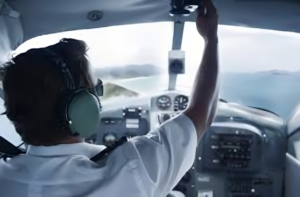Akasa Air Examiner Suspended After Failing Pilot Skill Check
Introduction
Akasa Air recently made headlines when one of its examiners was suspended following a serious lapse in checking pilot skills during routine training sessions. This incident has sparked widespread discussion within the aviation community and raised questions about the effectiveness of current training and evaluation protocols. In this article, we dive deep into what happened, why it matters, and what lessons can be learned to ensure the highest standards of safety and reliability in pilot training.

What Happened?
On a routine day at Akasa Air’s training centre, an examiner failed to properly assess a trainee pilot’s handling of emergency procedures. Key details include:
- The examiner overlooked critical simulation criteria.
- The trainee pilot passed the session despite exhibiting unsafe maneuvers.
- Internal audits later uncovered the discrepancy, prompting immediate action.
This suspension underscores the airline’s zero-tolerance policy for any compromise on safety and skill verification.
Why This Incident Matters
Aviation safety relies heavily on rigorous training and honest evaluations. When an examiner misses vital signs of inadequate performance, the implications can be far-reaching:
- Passenger Safety Risks
Inadequate pilot skills may lead to poor decision-making in real emergencies. - Brand Reputation Impact
News of such lapses can erode public trust in the airline’s commitment to safety. - Regulatory Scrutiny
Civil aviation authorities may impose stricter oversight and penalties. - Internal Culture
Raises questions about pressure on staff and whether corners are being cut.
How Pilot Evaluation Works
Understanding the standard process helps frame why this failure was so significant:
1. Simulator Sessions
- Trainee pilots undergo full-motion simulator drills.
- Examiners score based on predefined emergency scenarios.
2. In-Cockpit Checks
- Live flights with instructors assess real-world handling.
- Focus on takeoff, landing, and adverse-weather operations.
3. Written and Oral Exams
- Theoretical knowledge of procedures and regulations tested.
- Scenario-based Q&A ensures quick, correct responses.
Identified Lapses in the Current System
Post-incident reviews revealed several systemic gaps:
- Overloaded Examiners
Some were handling more trainees than recommended, leading to fatigue. - Outdated Checklists
Emergency procedure lists hadn’t been updated to include new simulator capabilities. - Lack of Peer Review
No secondary verification of exam results before final sign-off.
Recommendations for Improvement
To prevent such lapses, industry experts suggest:
- Reduce Examiner Workload
Limit the number of sessions per examiner each day. - Update Evaluation Protocols
Incorporate new scenario-based drills and revise checklists quarterly. - Implement Dual-Signoff
Require two examiners to confirm pass/fail decisions. - Regular Audits
Surprise checks by internal safety teams to ensure compliance. - Enhanced Training for Examiners
Periodic refresher courses on the latest aircraft systems and emergency protocols.

Real-Life Example: Learning from Other Airlines
Several global carriers have faced similar issues and responded proactively:
- Emirates introduced a peer-observation programme, where fellow instructors review each other’s evaluations.
- Delta Air Lines now uses AI-powered analytics to flag unusual pass rates or patterns.
- Qantas implemented mandatory simulator re-validation every six months for all examiners.
These measures have helped maintain high safety standards and rebuild passenger confidence.
Conclusion
The suspension of the Akasa Air examiner serves as a critical reminder that even established training systems can falter. By learning from this incident—and adopting proven best practices—airlines can bolster their evaluation frameworks, safeguard passenger trust, and uphold the highest levels of safety. Continuous improvement, transparency, and rigorous oversight are the keys to ensuring that every pilot stepping into the cockpit is truly ready to fly.